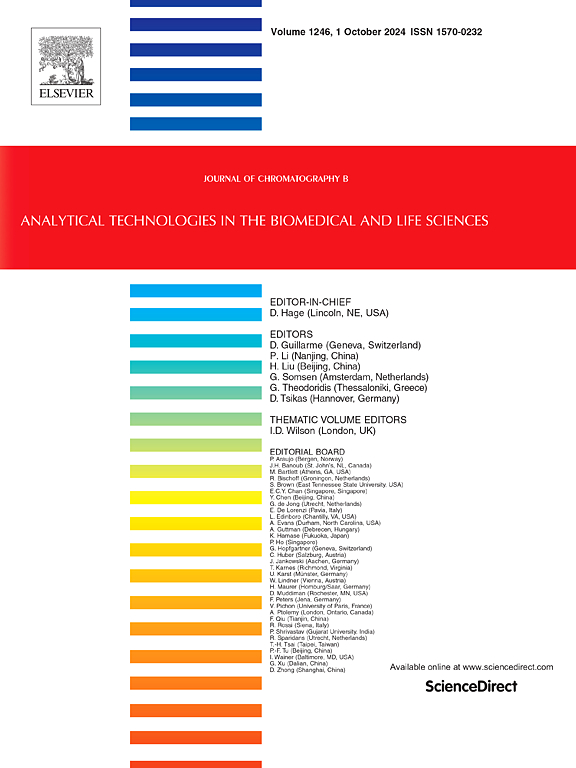Anion exchange chromatography coupled to mass spectrometry for deciphering the complexity of a highly glycosylated fusion protein (“protein HGF”)
IF 2.8
3区 医学
Q2 BIOCHEMICAL RESEARCH METHODS
引用次数: 0
Abstract
Fc-fusion proteins are medicines developed for the treatment of complex diseases which feature enhanced pharmacokinetic properties compared to other therapeutic protein formats. A commonly used strategy for the extension of protein half-life in circulation is the introduction of negative charges on the protein, preferably through N- and O-glycans equipped with negatively charged sialic acid moieties. While enhancing pharmacokinetics, the presence of many glycosylation sites can coincide with a considerable protein heterogeneity, which renders analytical characterisation increasingly difficult. In this work, we demonstrate that the complexity of a highly glycosylated intact Fc-fusion protein can be well resolved using mass spectrometry (MS)-friendly anion exchange chromatography (AEX) with pH gradient elution. The application of the developed method allowed for the separation of 9 clear chromatographic peaks and the acquisition of high-quality protein spectra and thus, MS detection of intact protein isoforms. The resulting data enabled the identification of 268 protein features which represents a ∼ 25-fold increase in detected forms compared to output that could be obtained by simple size exclusion chromatography-mass spectrometry. The underlying cause for the separation selectivity observed in AEX was found to be differential protein sialylation while varying numbers of hexose and N-acetylglucosamine units on glycans were identified as other major contributors to the high heterogeneity observed.

求助全文
约1分钟内获得全文
求助全文
来源期刊

Journal of Chromatography B
医学-分析化学
CiteScore
5.60
自引率
3.30%
发文量
306
审稿时长
44 days
期刊介绍:
The Journal of Chromatography B publishes papers on developments in separation science relevant to biology and biomedical research including both fundamental advances and applications. Analytical techniques which may be considered include the various facets of chromatography, electrophoresis and related methods, affinity and immunoaffinity-based methodologies, hyphenated and other multi-dimensional techniques, and microanalytical approaches. The journal also considers articles reporting developments in sample preparation, detection techniques including mass spectrometry, and data handling and analysis.
Developments related to preparative separations for the isolation and purification of components of biological systems may be published, including chromatographic and electrophoretic methods, affinity separations, field flow fractionation and other preparative approaches.
Applications to the analysis of biological systems and samples will be considered when the analytical science contains a significant element of novelty, e.g. a new approach to the separation of a compound, novel combination of analytical techniques, or significantly improved analytical performance.
 求助内容:
求助内容: 应助结果提醒方式:
应助结果提醒方式:


